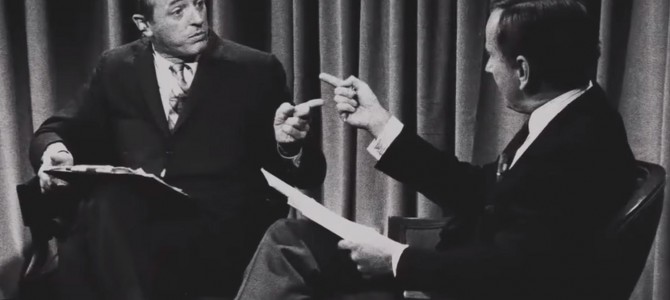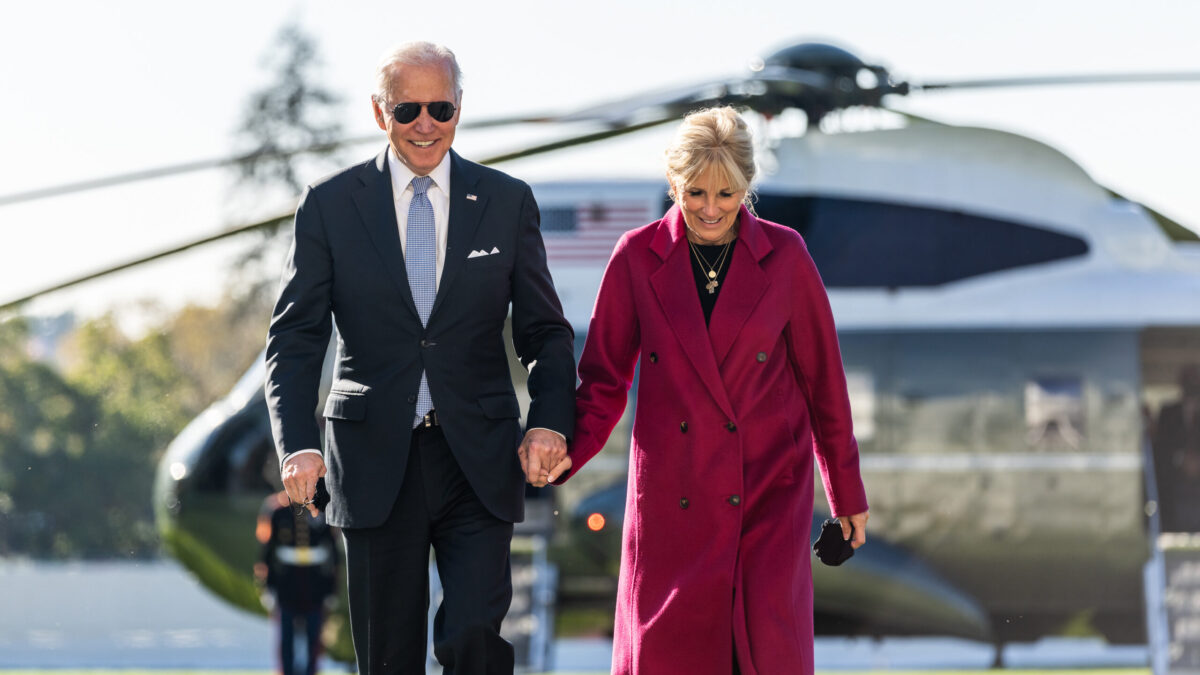
In July, Salon published a sprawling interview with cultural critic Camille Paglia, who remarked of the Planned Parenthood videos how disturbing it was that the liberal media had tried to ignore and bury the story. “That kind of censorship was shockingly unprofessional,” she said.
She talked about how liberals think they’re open-minded but in fact are very resistant to new or opposing ideas. The Planned Parenthood videos, she said, were just “a recent example of the persisting insularity of liberal thought in the media.”
“But here’s my point: it is everyone’s obligation, whatever your political views, to look at both liberal and conservative news sources every single day. You need a full range of viewpoints to understand what is going on in the world.”
That Paglia would say this at all is a sign that most Americans no longer read news sources that span the ideological spectrum. This is of course part of a larger problem. For years it’s been remarked that we no longer have one American culture but many, that we’ve become Balkanized into a dizzying array of interests and identity groups separated by race, ethnicity, religion, and much else.
But we’re also separated, increasingly, by the news and commentary we read and watch. To the extent that it informs us of what’s going on, and why, and what to expect, our fragmentation and insularity has reached a dangerous tipping point: we no longer agree on what’s real.
Take Two Recent Examples
Consider two news stories from last week. The first was about Ahmed Mohamed, the high-school student who brought a homemade alarm clock to school to impress his teachers and wound up getting arrested on suspicion of bringing a bomb. The Internet outrage mob erupted with righteous indignation, tweeting under #IStandWithAhmed and decrying Ahmed’s arrest as more evidence of rampant Islamophobia in America. A breathless headline at Vox declared, “It’s not just Ahmed Mohamed: anti-Muslim bigotry in America is out of control.” At Salon: “We must learn from Ahmed Mohamed: These are the true perils of Islamophobia in democracy.” And so on.
David Harsanyi and others on the Right noted that Ahmed’s arrest was a perfect example, not of Islamophobia, but of authoritarian bureaucracy in our public schools, of which there are endless examples. Routine overreaction by nervous school administrators and police is a huge problem, “But that’s not why the Ahmed Mohamed story blew up,” wrote Harsanyi. “The 14-year-old who was arrested in Irving, Texas, for bringing a homemade clock into school has become an orchestrated media event meant to teach the proles a lesson.”
Media Matters rounded up all the conservative commentary on the Ahmed story and chalked it up to “blaming 14-year-old Ahmed Mohamed for his own arrest.” Of course, Harsanyi and others had explicitly blamed our authoritarian education bureaucracy. But the fix was already in: skepticism about the role of Islamophobia was proof of just how virulent Islamophobia is in America today.
The other story was what Carly Fiorina said during the GOP debate about those Planned Parenthood videos. One of them shows a baby, she said, “its heart beating, its legs kicking,” having survived an abortion but left to die in a metal dish. That very night, the media rose up as with one voice and declared that Fiorina was lying: the Planned Parenthood videos don’t show that at all, Fiorina’s description was “pure fiction,” and “no such video exists.”
Trouble was, as The Federalist explained, one of the videos shows exactly what Fiorina described. Later in the week, Carly for America released a video contrasting graphic footage from the video with pundits’ claims that Fiorina had made the whole thing up. No matter. For liberals, it was too late: Fiorina had lied to score political points, end of discussion. For conservatives, it was obvious that the media was carrying water for Planned Parenthood, pretending the videos don’t show what they clearly show.
This dynamic is now more or less routine—and it works in both directions. When thousands of children from Central America showed up at the U.S.-Mexico border last summer, many conservatives were convinced it was all orchestrated by the Obama administration, despite plenty of evidence that larger forces were at play. I wrote about the border crisis in these pages, and was denounced by some readers as ignorant and naïve for suggesting it wasn’t an Obama plot to funnel illegal immigrants into the country. Since then, certain factions on the Right have arrived at epistemic closure on the immigration issue.
The larger problem is that those who read Salon and Vox will have a radically different understanding of the Planned Parenthood and Ahmed stories than those who read The Federalist and National Review. It’s fair to say they will never agree on even the simplest facts of each case. They won’t agree, ultimately, on what’s real and what’s not. If they can’t agree on that, they can’t have a conversation. All they can do is try to silence each other.
We’ve Seen This Before
There is an historical precedent for this, going back almost a half-century. “Best of Enemies,” a recent documentary about William F. Buckley and Gore Vidal’s televised debates during the 1968 Democratic and Republican national conventions, is really about contemporary media and the state of American political culture.
Early in the film, Richard Wald, a former top executive for ABC News, explains that in the late 1960s the purpose of TV news was to cement public opinion, not disrupt it. The idea of putting Buckley and Vidal, who hated each other, on screen for a live political debate was simply unheard of. ABC did it, not because they wanted to fundamentally alter the role of news media in America, but because they were last in the ratings and had nothing to lose. Unlike NBC and CBS, they couldn’t afford wall-to-mic convention coverage, so these debates would be the next best thing.
Buckley and Vidal met ten times over the course of the two conventions and spent most of their time attacking one another. Much of the debate footage is online, but the documentary plumbs the motivations of each man and the profound consequences of their televised battle. Of Vidal, Heritage Foundation historian Lee Edwards said, “I don’t think he was really interested in conducting a debate about the issues, or about the parties, or about the policies, or about the platforms of the two parties. What he wanted to do was to expose Bill Buckley.” In this Vidal succeeded, but not quite in the way he’d hoped.
The infamous moment came while they were debating the Vietnam War. Buckley compared opponents of the war to Nazi appeasers. Vidal, an opponent of the war, responded: “The only pro- or crypto-Nazi I can think of is yourself.” Back then, calling someone a Nazi was taboo (unlike today, when it is mostly ridiculous). Buckley lost his temper. He leaned toward Vidal, shaking with anger, narrowed his eyes and said: “Now listen, you queer, quit calling me a crypto-Nazi or I’ll sock you in the goddamn face and you’ll stay plastered.”
That moment, together with all the rancor and ad hominem attacks that had led up to it, inaugurated a new era in American media: the end of the old, sober centrism and the beginning of open ideological warfare. It didn’t happen overnight, but ABC’s success—the Buckley-Vidal debates propelled them to No. 1—didn’t go unnoticed, and on-air political debates between liberal and conservative pundits gradually became a regular feature of TV news programming: “The McLaughlin Group,” “Capital Gang,” “Crossfire,” and all the rest. The personal, vituperative tone of the Buckley-Vidal debates became the now-familiar register of political punditry.
From Two-Way Shouting to One-Way Mockery
This is beginning to change, but not for the better. Instead of shouting each other down the way they did on “Crossfire,” the new pundits are more apt to sneer and mock in the style of Jon Stewart. There’s little to be gained in arguing with an opponent but much to be gained by mocking him. What this means in practice is that we tend to seek out news and commentary that more or less reflects our own opinions back to us. Reading the news becomes an exercise in confirmation bias.
The proliferation of online opinion journals has been partly a welcome and positive good. But it’s also narrowed our shared cultural vocabulary, reducing the number and kinds of authorities to which members of different ideological camps may appeal. This very essay, for example, by virtue of being published in The Federalist, will for many otherwise intelligent and broad-minded people be enough to dismiss it out of hand. You simply can’t trust those people. (What’s more, media loyalties have by now become powerful signaling devices. Posting a piece to one’s Facebook or Twitter feed, if it comes from the wrong sort of site, could provoke stern rebukes from one’s peers.)
A certain logic sets in: some writers, and perhaps a great many of them, are not to be read because they’re not making good-faith arguments. Their publishers are in the business of advancing an agenda, probably at a financier’s request, and they all can be safely ignored. So we arrive at this unhappy place: why would a loyal reader of (or writer for), say, The New Republic ever read anything in The Federalist or National Review, except to sneer at it, mock its author, and impugn the motives of its publisher? The same goes for conservatives who refuse to read the New York Times or listen to NPR. Ignorance of the other’s argument, in this case, is a point of pride. The enemy is dangerous, after all, and must be stopped, not argued with, not taken seriously.
This is even happening within our major political parties. They do not want to hear what others have to say. On the Left, witness the Black Lives Matter activists shouting down Sen. Bernie Sanders. On the Right, Trump supporters and the #NRORevolt rage against so-called “cuckservatives.” Our fragmentation isn’t limited to media preferences anymore; the Republican and Democratic coalitions are eating each other.
Hindsight Will Be 20/20
One last point: we’re doing this, trying either to silence or ignore our enemies, with barely a trace of shame. In 1968, Buckley and Vidal each considered the other man to be dangerous, someone who must be exposed and silenced. But it marred their debates and diminished them both, and afterwards they knew it.
In his closing remarks of the final debate, Vidal lamented that viewers had not heard much about the important political questions of the day, nor had they really got a good sense of what each of them was really like. Buckley was mortified at his outburst and regretted it for the rest of his life. Vidal obsessed over it, watching and re-watching the debate tapes for years.
The question for us today, in our era of fragmented intellectual isolation, is whether someday we will regret it. I think we will.









